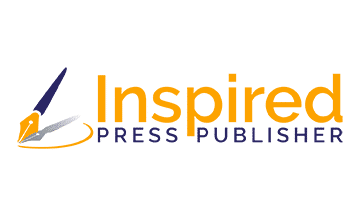Introduction: Your Book Is More Than Words on Paper
So, you’ve written your non-fiction book—congratulations! 🎉 That’s no small feat. But here’s the thing: if your book isn’t actively bringing you leads and clients, you’re leaving its greatest potential untapped.
A book can be a coach’s or consultant’s most powerful business development tool, but only if it’s marketed intentionally. In this guide, we’ll break down exactly how to turn your non-fiction book into a lead generation and client acquisition machine.
Step 1: Define Your Core Audience and Positioning
Before you think about flashy launch events or ads, you need clarity. Who is your book for, and how does it solve their biggest problem?
- Audience: Be specific. “Business owners” is vague. “Female solopreneurs scaling to their first $100k” is clear.
- Problem: What transformation does your book deliver? Is it clarity? Confidence? Systems?
- Positioning: How does your book differentiate you from other authors in your niche?
👉 Example: A productivity coach might position their book as “The practical, no-fluff guide for busy executives who need results in 30 days.”
The sharper your positioning, the easier it is to market.
Step 2: Build an Author Platform That Attracts Leads
Your book may live on Amazon, but your business lives on your platform. You need a system that turns book readers into potential clients.
- Website: Create a landing page for your book that includes a strong call-to-action (e.g., download a free resource, book a consultation).
- Email List: Offer bonuses to collect reader emails. A free workbook, checklist, or video training tied to your book works perfectly.
- Social Media: Share content inspired by your book—short clips, behind-the-scenes stories, and reader testimonials.
💡 Pro tip: Use tools like BookFunnel or Pandarus to automate email capture and follow-up sequences.
Step 3: Use Your Book to Fuel Email List Growth
The fortune is in the follow-up, and your book is the perfect list-building tool.
At the end of your book, include a “Next Step” page:
- “Want the free workbook that goes with this chapter? Download it here.”
- “Join my exclusive book readers’ group for deeper training.”
Then nurture your list with:
- Weekly insights from your expertise
- Invitations to workshops or webinars
- Personal stories that build connection
This turns casual readers into engaged prospects—and eventually, paying clients.
Step 4: Repurpose Your Book into Marketing Assets
Why reinvent the wheel when you already wrote it? Your non-fiction book is a content goldmine.
- Blog posts: Expand key ideas from each chapter.
- Podcasts & guest posts: Pitch yourself as a guest expert with topics pulled directly from your book.
- Speaking gigs: Use your book’s structure as the outline for a keynote talk.
- Workshops: Turn chapters into paid or free workshops to draw in clients.
👉 Example: If your book has a chapter on “5 Steps to Better Time Management,” that’s also a blog series, a webinar, and a LinkedIn article.
Step 5: Leverage Speaking and Media Opportunities
Event organizers and journalists love authors. Your book positions you as a credible expert—but you still need to market yourself strategically.
- Speaking gigs: Reach out to local business groups, industry associations, or podcasts. Lead with your book as your authority credential.
- Media coverage: Pitch journalists and bloggers with book-related story ideas. Tie your expertise to current events or trending conversations.
- Podcast tours: Do 10–20 podcast guest appearances in your niche. Each one introduces you to new audiences and drives book + service sales.
💡 Pro tip: Create a one-page media kit with your bio, headshot, book cover, and suggested interview topics.
Step 6: Track ROI and Conversions from Your Book
Marketing is only effective if it produces results. Don’t just look at book sales—look at business growth.
Key metrics to track:
- Number of new email subscribers from your book
- Leads generated through book-related offers
- Speaking gigs booked because of your book
- Media appearances secured
- Clients acquired directly from book readers
👉 Example: If you sold 500 books and 5% of readers became coaching clients, that’s 25 new clients—likely worth far more than the book royalties.
Case Example: Turning a Book Into a Lead Magnet
A business coach we worked with at Inspired Press Publisher wrote a book on scaling small businesses. Instead of just selling copies, she added a “free toolkit” download link in the book.
Within six months, she:
- Added 1,000 new subscribers to her email list
- Booked 4 speaking engagements
- Closed 10 new clients from her book readers
The book wasn’t just a product—it was the engine fueling her business growth.
Common Pitfalls to Avoid
- Focusing only on sales: The goal isn’t book royalties—it’s leads, clients, and opportunities.
- Failing to integrate with your business: If your book doesn’t lead back to your services, you’re missing out.
- Stopping too soon: Book marketing is a marathon, not a sprint. The biggest wins often happen months after launch.
Conclusion: Market Your Book Like It’s Your Business
Your non-fiction book has the potential to be the most powerful marketing asset in your business toolbox. But without a clear strategy, it’s just paper and ink.
By defining your audience, building your platform, using your book to grow your list, and leveraging speaking and media, you’ll turn your book into a client-generating powerhouse.
👉 Ready to make your book work harder for you? Explore Inspired Press Publisher’s Book Launch Strategy Services. We’ll help you design a marketing plan that transforms your non-fiction book into a steady stream of leads, clients, and opportunities.
